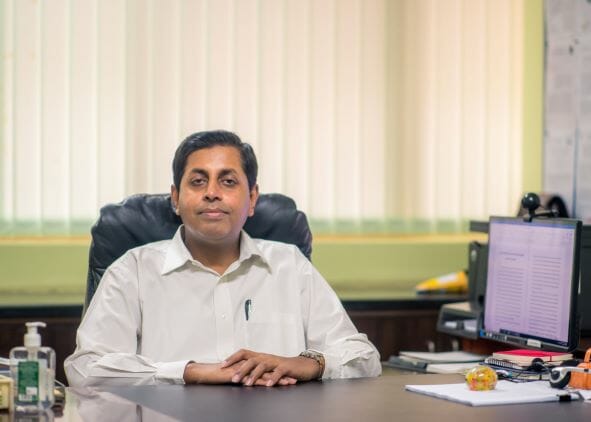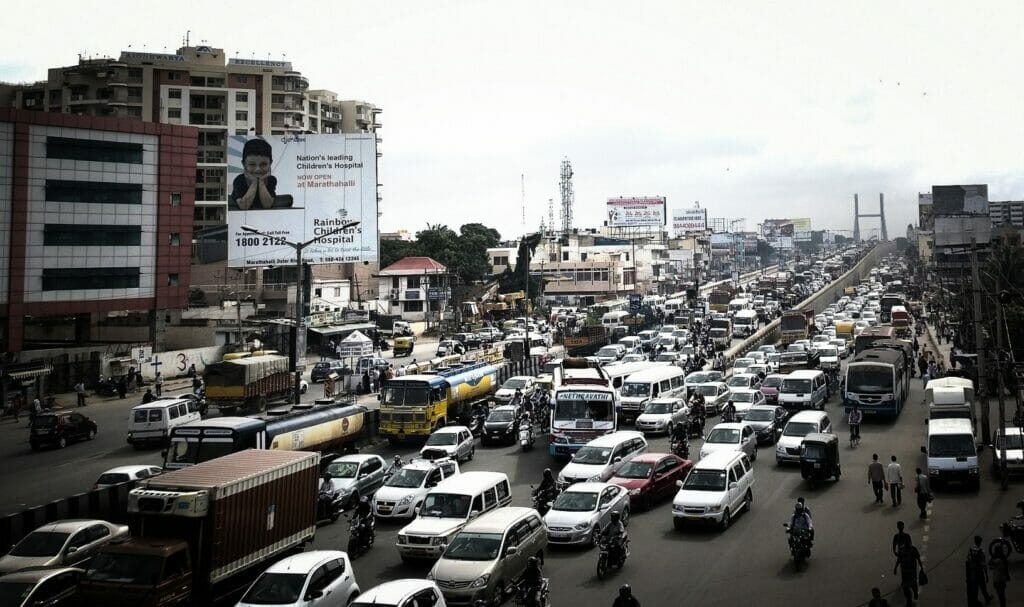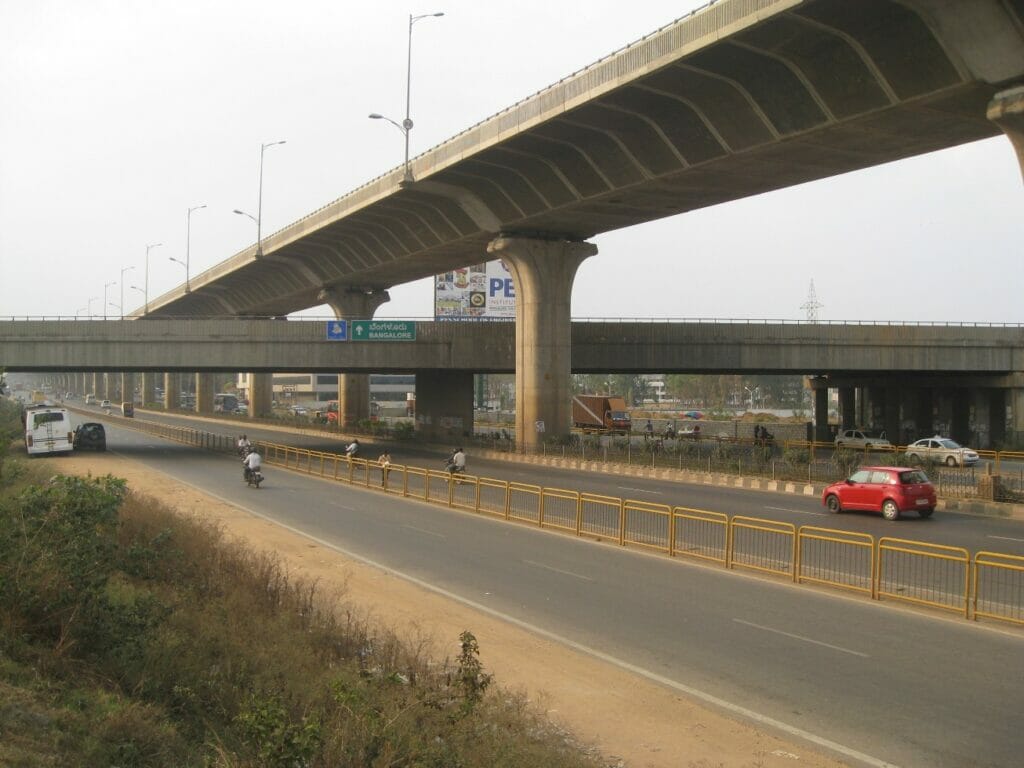Professor Ashish Verma, convenor of the Sustainable Transportation Lab at Indian Institute of Science (IISc) recently made a detailed presentation on the problems with the Sankey Road flyover at the Citizens for Sankey meeting.
A professor of transportation systems engineering, Ashish has been with the IISc for 14 years and has developed, in his own words, “a systems perspective to problem solving in transportation with a strong focus on development goals.”
Ashish has been a vocal critic of flyovers. He has provided his scientific perspective to various citizens groups concerned about projects like the Steel Flyover, Elevated Corridor, and, most recently, the Sankey Road flyover.
In this exclusive interview with Citizen Matters, Ashish gives his insights on how transportation and mobility in the city should be planned. At a time when the Chief Minister has announced the construction of 11 new flyovers to solve Bengaluru’s traffic problems, he explains how short-sighted these plans are.
CM: How would you define or explain the term ‘development’?
AV: There are several dimensions of development goals that a city should typically have: sustainability, health impact, quality of life, economic impacts, equity, environment and ecology. A simple goal would be to make the city more liveable or to improve the quality of life of every citizen, of course, as long as we understand the true meaning of quality of life, or livability.
BBMP will equate development with building flyovers, people having more cars, and the ability to run their cars faster. Is that our definition of development? Or should development refer to a state where everybody in the city breathes fresh clean air, has access to social spaces, opportunity and education? A state in which everybody, across genders or income groups, is able to utilise the transport system and infrastructure for their welfare.

In my opinion, these are the core aspects of development. I’m sure, at the core, everybody would agree that this is really the kind of development we should look at. So, when you think about interventions to solve core transportation problems, we should also see how it impacts these development goals.
CM: You have been a long-time critic of simply building roads and flyovers to solve traffic. Why are these not the solution?
AV: Our car ownership levels are still very low compared to [any developed country] where car ownership has saturated at a level somewhere between at 600 to 800 cars per 1,000 population.
Car ownership levels in India are approximately 225 cars per 1000 population according to Statista; Niti Aayog estimates that only 8% of the country own cars.
But we are growing fast in terms of the economy and the car ownership level. Considering this position of India, we have to think about the kind of impact that any intervention on transport system infrastructure will have on our cities and these development goals.
Seen from that lens, these attempted road infrastructure measures are failing to achieve their objective mainly because our population is growing, our incomes are also rising, and so is our car ownership. The infrastructure provision will fail to match the level of demand and the growth of demand. It’s happening now and will keep happening in the future.
At the same time, this current position of India gives us an opportunity. Because our current car ownership levels are lower, we should invest in sustainable modes like public transport, walking and cycling rather than investing in road infrastructure the way America or Australia did. We could then reduce our car ownership and contain our carbon emissions.

CM: How do these countries continue to invest in and expand road infrastructure then?
AV: They continue to invest in road infrastructure, but their context is different. In the US, road infrastructure and interventions are still the norm of the day and car ownership is among the highest in the world. Their landmass is also very high compared to India. Their population is low and absolute growth in population is nil or negative. If today you build a flyover [in the US], it might actually serve longer because the population and car ownership has saturated, and traffic is not going to increase.
But the Indian situation is very different because our population is still growing, our car ownership levels are far below saturation levels, and we are still a fast growing economy. If you build road infrastructure here, it will get occupied and consumed in no time.
Read more: Residents of Sankey Road say flyover beda, will BBMP listen?
Adding to the complexity is the huge migration to bigger cities like Bengaluru, because of opportunities. So, there’s not only natural population growth, but also growth happening because of migration.
CM: So, are you saying Bengaluru should just stop building flyovers?
AV: There could be one situation in which flyovers could be a long term solution in Bengaluru. You literally halve the existing population of Bengaluru, ship people to other places, and generate opportunities there. Then, freeze the population, don’t let it grow beyond this. Convert all vehicles to electric.
Now, there will be no further increase in vehicles in the future, because population is frozen. Also, since all vehicles are electric, and if they can recharge through solar-based electricity, there will be no emissions. If you can ensure such conditions and then build a flyover, considering the required demand for that frozen population, then it may serve for a long time.
But is this a scenario the government is ready to implement? Can it be practically implemented? No, just not possible. That’s why flyovers will not work in most Indian cities, including Bengaluru.
CM: In Bengaluru, traffic management appears to happen in a piecemeal way with the focus on individual junctions, rather than on the city at large. What do you think of this?
AV: This has been the traditional way in which transportation engineering philosophy has developed: Estimate the growth in the number of vehicles, accordingly figure out how much more road infrastructure you need, and then build or expand. It’s a bottom-up approach, where you just identify hotspots of congestion at a junction or corridor, and then try to suggest some solutions to alleviate [traffic] at those hotspots. But this approach neglects network impact.
You may do something at one junction, but it may have implications on the adjoining junction in terms of bottlenecks. These may get congested to the extreme, leading to situations of queue length build up, which might actually have a spill over effect on the very junction that is being improved. This is the story with many of these underpasses and flyovers that our agencies have built in recent decades, including the Shivananda circle flyover, where there is a railroad crossing bottleneck.
And because of the flyover, the discharge rate of vehicles is very high, which clogs this bottleneck much more. That clogging effect spills over onto the flyover. So, now you’re already seeing traffic jams on the flyover.

CM: And this also has an environmental implication, right?
AV: When you build these road infrastructures, you are increasing vehicle kilometres travelled by these motorised modes. Our EV [electric vehicle] adoption rate is currently very low. We’re still predominantly reliant on fossil fuels. So, more miles means more consumption of fuel. And it will also mean more tailpipe emissions per kilometre.
Now almost 70-80% of our consumption of oil is met through imports. So, there are not just environmental, but economic implications too. How can you make our economy, our transport system more dependent on fossil fuel? It’s sheer foolishness. And that too when we are seeing the consequences of a fossil-fuel based economy and how countries can go bankrupt.
Read more: Explainer: Urban planning measures that can reduce traffic and ease commute
Take the example of energy crisis due to the Ukraine war. It is impacting gas supplies and energy supplies in Europe. Or Sri Lanka, where people are queuing up in petrol bunks for days just to fill a can of petrol or diesel. And the whole economy stops because you can’t move people and goods. The same thing is happening in Pakistan. Can’t we learn from these examples and be smarter?
And you know, these are heavy infrastructures built with huge cost? Can we simply afford to break them, If we realise that it’s not working? No, we can’t do that. It’s a huge waste of public money.
Note: To be continued. The second part of the interview will focus on sustainable mobility planning in Bengaluru in greater detail.
To make city livable ,Public Transport ( Metro or Bus or both )alogwith Non Motorised Transport like Cycle pathsand decent covered Walkways for Pedestrians should be given highest Priority.
Safe,comfortable,fresh and pure air are most important for livable city.
City Authorities should consult Urban Transport Experts before finalizing Infrastructure Projects.
Multi modal urban Transportation with single Authority to control will help for sustainable goals.